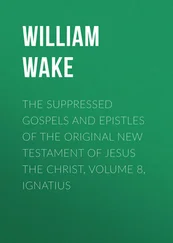Ignatius Donnelly - Antediluvian world
Здесь есть возможность читать онлайн «Ignatius Donnelly - Antediluvian world» весь текст электронной книги совершенно бесплатно (целиком полную версию без сокращений). В некоторых случаях можно слушать аудио, скачать через торрент в формате fb2 и присутствует краткое содержание. Жанр: Старинная литература, на русском языке. Описание произведения, (предисловие) а так же отзывы посетителей доступны на портале библиотеки ЛибКат.
- Название:Antediluvian world
- Автор:
- Жанр:
- Год:неизвестен
- ISBN:нет данных
- Рейтинг книги:5 / 5. Голосов: 1
-
Избранное:Добавить в избранное
- Отзывы:
-
Ваша оценка:
- 100
- 1
- 2
- 3
- 4
- 5
Antediluvian world: краткое содержание, описание и аннотация
Предлагаем к чтению аннотацию, описание, краткое содержание или предисловие (зависит от того, что написал сам автор книги «Antediluvian world»). Если вы не нашли необходимую информацию о книге — напишите в комментариях, мы постараемся отыскать её.
Antediluvian world — читать онлайн бесплатно полную книгу (весь текст) целиком
Ниже представлен текст книги, разбитый по страницам. Система сохранения места последней прочитанной страницы, позволяет с удобством читать онлайн бесплатно книгу «Antediluvian world», без необходимости каждый раз заново искать на чём Вы остановились. Поставьте закладку, и сможете в любой момент перейти на страницу, на которой закончили чтение.
Интервал:
Закладка:
According to Father Charlevoix, the tribes of Canada and the valley of the Mississippi relate in their rude legends that all mankind was destroyed by a flood, and that the Good Spirit, to repeople the earth, had changed animals into men. It is to J. S. Kohl we owe our acquaintance with the version of the Chippeways—full of grotesque and perplexing touches—in which the man saved from the Deluge is called Menaboshu. To know if the earth be drying, he sends a bird, the diver, out of his bark; then becomes the restorer of the human race and the founder of existing society.
A clergyman who visited the Indians north-west of the Ohio in 1764 met, at a treaty, a party of Indians from the west of the Mississippi.
“They informed him that one of their most ancient traditions was that, a great while ago, they had a common father, who lived toward the rising of the sun, and governed the whole world; that all the white people’s heads were under his feet; that he had twelve sons, by whom he administered the government; that the twelve sons behaved very bad, and tyrannized over the people, abusing their power; that the Great Spirit, being thus angry with them, suffered the white people to introduce spirituous liquors among them, made them drunk, stole the special gift of the Great Spirit from them, and by this means usurped power over them; and ever since the Indians’ heads were under the white people’s feet.” (Boudinot’s “Star in the West,” p. 111.) Here we note that they looked “toward the rising sun”—toward Atlantis—for the original home of their race; that this region governed “the whole world;” that it contained white people, who were at first a subject race, but who subsequently rebelled, and acquired dominion over the darker races. We will see reason hereafter to conclude that Atlantis had a composite population, and that the rebellion of the Titans in Greek mythology was the rising up of a subject population.
In 1836 C. S. Rafinesque published in Philadelphia, Pa., a work called “The American Nations,” in which he gives the historical songs or chants of the Lenni-Lenapi, or Delaware Indians, the tribe that originally dwelt along, the Delaware River. After describing a time “when there was nothing but sea-water on top of the land,” and the creation of sun, moon, stars, earth, and man, the legend depicts the Golden Age and the Fall in these words: “All were willingly pleased, all were easy-thinking, and all were well-happified. But after a while a snake-priest, Powako, brings on earth secretly the snake-worship (Initako) of the god of the snakes, Wakon. And there came wickedness, crime, and unhappiness. And bad weather was coming, distemper was coming, with death was coming. All this happened very long ago, at the first land, Netamaki, beyond the great ocean Kitahikau.” Then follows the Song of the Flood:
“There was, long ago, a powerful snake, Maskanako, when the men had become bad beings, Makowini. This strong snake had become the foe of the Jins, and they became troubled, hating each other. Both were fighting, both were, spoiling, both were never peaceful. And they were fighting, least man Mattapewi with dead-keeper Nihaulowit. And the strong snake readily resolved to destroy or fight the beings or the men. The dark snake he brought, the monster (Amanyam) he brought, snake-rushing water he brought (it). Much water is rushing, much go to hills, much penetrate, much destroying. Meanwhile at Tula (this is the same Tula referred to in the Central American legends), at THAT ISLAND, Nana-Bush (the great hare Nana) becomes the ancestor of beings and men. Being born creeping, he is ready to move and dwell at Tula. The beings and men all go forth from the flood creeping in shallow water or swimming afloat, asking which is the way to the turtle-back, Tula-pin. But there are many monsters in the way, and some men were devoured by them. But the daughter of a spirit helped them in a boat, saying, ‘Come, come;’ they were coming and were helped. The name of the boat or raft is Mokol. . .
. Water running off, it is drying; in the plains and the mountains, at the path of the cave, elsewhere went the powerful action or motion.”
Then follows Song 3, describing the condition of mankind after the Flood. Like the Aryans, they moved into a cold country: “It freezes was there; it snows was there; it is cold was there.” They move to a milder region to hunt cattle; they divided their forces into tillers and hunters. “The good and the holy were the hunters;” they spread themselves north, south, east, and west.” Meantime all the snakes were afraid in their huts, and the Snake-priest Nakopowa said to all, ‘Let us go.’ Eastwardly they go forth at Snakeland (Akhokink), and they went away earnestly grieving.” Afterward the fathers of the Delawares, who “were always boating and navigating,” find that the Snake-people have taken possession of a fine country; and they collect together the people from north, south, east, and west, and attempt “to pass over the waters of the frozen sea to possess that land.” They seem to travel in the dark of an Arctic winter until they come to a gap of open sea. They can go no farther; but some tarry at Firland, while the rest return to where they started from, “the old turtle land.”
Here we find that the land that was destroyed was the “first land;” that it was an island “beyond the great ocean.” In all early age the people were happy and peaceful; they became wicked; “snake worship” was introduced, and was associated, as in Genesis, with the “fall of man;”
Nana-Bush became the ancestor of the new race; his name reminds us of the Toltec Nata and the Hebrew Noah. After the flood came a dispersing of the people, and a separation into hunters and tillers of the soil.
Among the Mandan Indians we not only find flood legends, but, more remarkable still, we find an image of the ark preserved from generation to generation, and a religious ceremony performed which refers plainly to the destruction of Atlantis, and to the arrival of one of those who escaped from the Flood, bringing the dreadful tidings of the disaster.
It must be remembered, as we will show hereafter, that many of these Mandan Indians were white men, with hazel, gray, and blue eyes, and all shades of color of the hair from black to pure white; that they dwelt in houses in fortified towns, and manufactured earthen-ware pots in which they could boil water—an art unknown to the ordinary Indians, who boiled water by putting heated stones into it.
I quote the very interesting account of George Catlin, who visited the Mandans nearly fifty years ago, lately republished in London in the “North American Indians,” a very curious and valuable work. He says (vol. i., p. 88):
“In the centre of the village is an open space, or public square, 150
feet in diameter and circular in form, which is used for all public games and festivals, shows and exhibitions. The lodges around this open space front in, with their doors toward the centre; and in the middle of this stands an object of great religious veneration, on account of the importance it has in connection with the annual religious ceremonies. This object is in the form of a large hogshead, some eight or ten feet high, made of planks and hoops, containing within it some of their choicest mysteries or medicines. They call it the ‘Big Canoe.’”
This is a representation of the ark; the ancient Jews venerated a similar image, and some of the ancient Greek States followed in processions a model of the ark of Deucalion. But it is indeed surprising to find this practice perpetuated, even to our own times, by a race of Indians in the heart of America. On page 158 of the first volume of the same work Catlin describes the great annual mysteries and religious ceremonials of which this image of the ark was the centre. He says: “On the day set apart for the commencement of the ceremonies a solitary figure is seen approaching the village.
Читать дальшеИнтервал:
Закладка:
Похожие книги на «Antediluvian world»
Представляем Вашему вниманию похожие книги на «Antediluvian world» списком для выбора. Мы отобрали схожую по названию и смыслу литературу в надежде предоставить читателям больше вариантов отыскать новые, интересные, ещё непрочитанные произведения.
Обсуждение, отзывы о книге «Antediluvian world» и просто собственные мнения читателей. Оставьте ваши комментарии, напишите, что Вы думаете о произведении, его смысле или главных героях. Укажите что конкретно понравилось, а что нет, и почему Вы так считаете.












